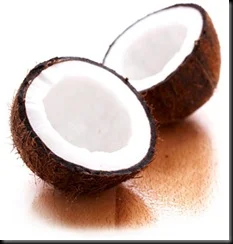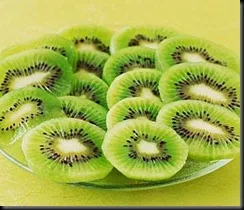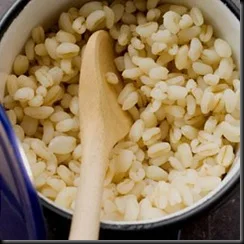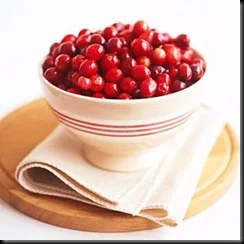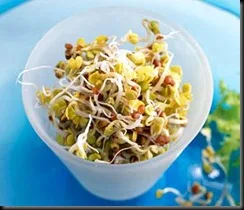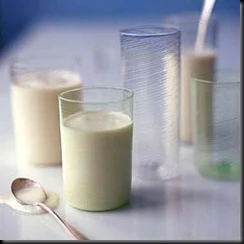Maldives 45th Independence Day celebrations across the Maldives
Celebrations are underway across the Maldives as the tropical island nation celebrates Independence Day.
Locals and tourists alike will find plenty of spectacles and entertainment taking place throughout the rest of the day and also tomorrow (July 26 and 27).
Today began with the hoisting of the red and green national flag in front of crowds in Republic Square in Male' before President Nasheed addressed the nation. It was followed by a watersports display in the adjacent marina, before the President proceeded to the new National Museum to officially inaugurate it. The new museum is host to fascinating artefacts from the Maldives' cultural heritage, as well as a collection of its natural wonders including a whale skeleton.
Further highlights of today will include a music show at Alimas Carnival Stage, attended by Maldivian actor Moosa "Chilhiya' Maniku", at 8.30pm.
Tomorrow there will be various other events and military drills around the capital and surrounding islands, including another music show at Alimas Carnival Stage at 8.30pm.
Heads of state from around the world have sent their congratulations to the Maldives on the occasion of the nation's 45th Independence Day celebrations.
Copyright © 2004 & 2007 Ibrahim Mohamed! Inc. All rights reserved.e-mail:ibumohd@gmail.com
Coconut Oil Extract May Be A Weapon Against Food Bacteria
Monolaurin, an extract from coconut oil could be used as a microbial agent in food. Monolaurin has been recognized as safe by the U.S. Food and Drug Administration (FDA) and is known for its antimicrobial properties. If used in combination with other antimicrobial agents, monolaurin can present an effective barrier to microorganisms.
Researchers from Zhejiang University in China studied the use of monolaurin as a nontraditional preservative in food products by combining it with commonly used antimicrobials in various concentrations and testing it on bacterial strains including Esherichia coli and on food components such as soy protein and water-soluble starch. Researchers made the following findings:
- Monolaurin combined with ethylenediaminetetraacetic acid (EDTA),a binding agent, was effective against Esherichia coli and Bacillus subtilis but not Staphylococcus aureus.
- When combined with the antimicrobial nisin, monolaurin was synergistically effective against all three bacteria.
- Researchers studied monolaurin’s interaction with food components and found that its antibacterial effectiveness was reduced by fat or starch but was not affected by protein.
“These results contribute to a better understanding on the use of monolaurin as a nontraditional preservative for antimicrobial purpose in food products. The antimicrobial effects of monolaurin can be increased if used together or in combination with other preservative systems,”.
Source: Sciencedaily
Copyright © 2004 & 2007 Ibrahim Mohamed! Inc. All rights reserved.e-mail:ibumohd@gmail.com
Green Tea
Archeological evidence suggests that people consumed tea leaves steeped in boiling water as many as 500,000 years ago. There are three main varieties of tea green, black, and oolong. The difference between the teas is in their processing. Green tea is made from unfermented leaves and reportedly contains the highest concentration of powerful antioxidants called polyphenols. Antioxidants such as polyphenols in green tea can neutralize free radicals and may reduce or even help prevent some of the damage they cause.
Polyphenols contained in teas are classified as catechins. Green tea contains six primary catechin compounds: catechin, gallaogatechin, epicatechin, epigallocatechin, epicatechin gallate, and apigallocatechin gallate (also known as EGCG). EGCG is the most studied polyphenol component in green tea and the most active.
Green tea also contains alkaloids including caffeine, theobromine, and theophylline. These alkaloids provide green tea's stimulant effects. L-theanine, an amino acid compound found in green tea, has been studied for its calming effects on the nervous system.
Green tea has been consumed throughout the ages in India, China, Japan, and Thailand. In traditional Chinese and Indian medicine, practitioners used green tea as a stimulant, diuretic (to promote the excretion of urine), astringent (to control bleeding and help heal wounds), and to improve heart health. Other traditional uses of green tea include treating flatulence (gas), regulating body temperature and blood sugar, promoting digestion, and improving mental processes.
Benefits:
1. Atherosclerosis: Population-based clinical studies indicate that the antioxidant properties of green tea may help prevent atherosclerosis, particularly coronary artery disease.2. Cholesterol: Green tea lowers total cholesterol and raises HDL ("good") cholesterol in both animals and people. men who drink green tea are more likely to have lower total cholesterol than those who do not drink green tea. Results from one animal study suggest that polyphenols in green tea may block the intestinal absorption of cholesterol and promote its excretion from the body.
3. Cancer: Green tea protects against Bladder, Breast, Ovarian, Colorectal, Esophageal, Lung, Pancreatic, Prostate, cancer.
4. Inflammatory Bowel Disease (IBD): Green tea may help reduce inflammation associated with Crohn's disease and ulcerative colitis, the two types of IBD. If green tea proves to be helpful for preventing colon cancer, this would be an added benefit for those with IBD because they are at risk for colon cancer.
5. Diabetes: Green tea has been used traditionally to control blood sugar in the body. Animal studies suggest that green tea may help prevent the development of type 1 diabetes and slow the progression once it has developed. People with type 1 diabetes produce little or no insulin, a hormone that converts glucose (sugar), starches, and other foods into energy needed for daily life. Green tea may help regulate glucose in the body.
6. Liver disease: Green tea also seems to protect the liver from the damaging effects of toxic substances such as alcohol. Animal studies have shown that green tea helps protect against the development of liver tumors in mice. Results from several animal and human studies suggest that one of the polyphenols present in green tea, known as catechin, may help treat viral hepatitis (inflammation of the liver from a virus). In these studies, catechin was isolated from green tea and used in very high concentrations. It is not clear whether green tea (which contains a lower concentration of catechins) confers these same benefits to people with hepatitis.
7. Weight loss: Clinical studies suggest that green tea extract may boost metabolism and help burn fat. One study confirmed that the combination of green tea and caffeine improved weight loss and maintenance in overweight and moderately obese individuals. Some researchers speculate that substances in green tea known as polyphenols, specifically the catechins, are responsible for the herb's fat-burning effect.
8. Other uses: Drinking green tea has been found effective in a small clinical study for dental caries, or tooth decay. More studies need to be performed. Green tea may also be useful in inflammatory diseases, such as arthritis. Research indicates that green tea may benefit arthritis by reducing inflammation and slowing cartilage breakdown. Chemicals found in green tea may also be effective in treating genital warts and preventing symptoms of colds and influenza.
Precautions:
The use of herbs is a time-honored approach to strengthening the body and treating disease. However, herbs contain active substances that can trigger side effects and interact with other herbs, supplements, or medications. For these reasons, people should take herbs with care, under the supervision of a practitioner knowledgeable in the field of botanical medicine.
People with heart problems, kidney disorders, stomach ulcers, and psychological disorders (particularly anxiety) should not take green tea. Pregnant and breast feeding women should also avoid green tea.
People who drink excessive amounts of caffeine (including caffeine from green tea) for prolonged periods of time may experience irritability, insomnia, heart palpitation, and dizziness. Caffeine overdose can cause nausea, vomiting, diarrhea, headaches, and loss of appetite. If you are drinking a lot of tea and start to vomit or have abdominal spasms, you may have caffeine poisoning. Lower your caffeine intake and see your health care provider if your symptoms are severe
Source: MSN
Copyright © 2004 & 2007 Ibrahim Mohamed! Inc. All rights reserved.e-mail:ibumohd@gmail.com
Superfoods: The Next Frontier
No longer, thanks to research that's shifting the spotlight to a new generation of health-boosting foods—many of which do double or triple duty to help prevent illness. Here are six on the brink of superstar status.
1. Pomegranate
If you're going to have a martini, at least make it a pomegranate one. This fall fruit has higher antioxidant activity than red wine and green tea, which may be why a number of studies show it may prevent skin cancer and kill breast and prostate cancer cells. It also helps to:
Fight Alzheimer's disease Researchers at Loma Linda University found that mice who drank pomegranate juice experienced 50 percent less brain degeneration than animals that consumed only sugar water. The pomegranate drinkers also did better in mazes and tests as they aged.
Guard your arteries A group of diabetics who drank about 2 ounces of pomegranate juice a day for three months kept their bodies from absorbing bad cholesterol into their immune system cells (a major contributing factor to hardened arteries), discovered Israeli researchers.
2. Kiwifruit
Don't judge this fruit by its cover: Under that bristly brown peel you'll find a bright green star bursting with antioxidants and full of fiber. Kiwifruit works to:
Protect against free radical damage
A study from Rutgers University compared the 27 most popular fruits and determined that kiwifruit was the most nutritionally dense. Plus, it makes the short list of fruits with substantial amounts of vitamin E, and contains more vision-saving lutein than any other fruit or vegetable, except for corn.
Lower blood-clot risk
In a 2004 study from the University of Oslo in Norway, participants who ate two or three kiwis for 28 days significantly reduced their potential to form a clot. They also got a bonus benefit: Their triglycerides, a blood fat linked to heart attack, dropped by 15 percent.
3. Barley
When some whole grains, such as wheat and oats, are processed, they lose their fiber content. Not so with barley, which is full of soluble beta-glucan fiber in its whole kernel or refined flour form. Studies show this particular fiber may:
Knock down bad cholesterol by as much as 17.4 percent, according to USDA research
A 2004 study found that adults with moderately high cholesterol levels who went on a low-fat American Heart Association diet began to see an improvement only when barley was added to the menu.
Decrease blood sugar and insulin levels
That makes barley a better choice for people with type 2 diabetes, says a 2005 Agricultural Research Services study.
That makes barley a better choice for people with type 2 diabetes, says a 2005 Agricultural Research Services study.
4. Cranberries
This born-and-bred American berry is among the top 10 antioxidant-rich foods, making it a potent cancer protector. You know it helps prevent urinary tract infection, and perhaps you heard it prevents gum disease, too, but did you know that these beneficial berries may:
Eradicate E. coli
Compounds in the juice can actually alter antibiotic-resistant strains, making it impossible for the harmful bacteria to trigger an infection. A small pilot study from Harvard Medical School and Rutgers University found that eating about 1/3 cup of dried cranberries yielded the same effect.
Help prevent strokes
Research on pigs with a genetic predisposition to atherosclerosis—narrow, hardened arteries that may lead to heart attack and stroke—found that those fed dried cranberries or juice every day had healthier, more flexible blood vessels
5. Broccoli sprouts
Yes, we've been through this: broccoli, good. The news: Broccoli sprouts are even better. At a mere 3 days old, they contain at least 20 times as much of disease-fighting sulforaphane glucosinolate (SGS) as their elders. SGS has been shown to:
Kill tumors
The chemical triggers enzymes in the body that either kill cancer cells or keep them from growing. Just 1 ounce of sprouts has as much SGS as 1 1/4 pounds of broccoli. That'll save you lots of chewing.
Protect your heart
A Japanese pilot study found people who ate about a half cup a day of sprouts lowered their total cholesterol by an average of 15 points. And women in the study raised their good cholesterol by 8 points—in just 1 week.
Save your sight
Exposure to UV sunlight over time may lead to an eye condition called macular degeneration, which is the number-one cause of blindness in U.S. seniors. Researchers at Johns Hopkins determined that broccoli sprouts can protect retinal cells from ultraviolet light damage.
6. Kefir
This cultured milk drink stacks up in calcium—one 8-ounce serving contains 30 percent of the recommended daily intake. It also contains more beneficial bacteria than yogurt. It may also:
Reduce food allergies
Baby mice fed kefir had a threefold reduction in the amount of an antibody linked to food allergies, say researchers at an agricultural university.
Battle breast cancer
Women age 50 and older who consumed fermented milk products had a lower risk than those who ate little or none.
Avoid triggering lactose intolerance
Kefir contains lactase, the enzyme that people with lactose intolerance are missing, say researchers at Ohio State University. And the taste? Like plain yogurt, just a little thinner.
Source:Msn
Copyright © 2004 & 2007 Ibrahim Mohamed! Inc. All rights reserved.e-mail:ibumohd@gmail.com
Subscribe to:
Posts (Atom)



